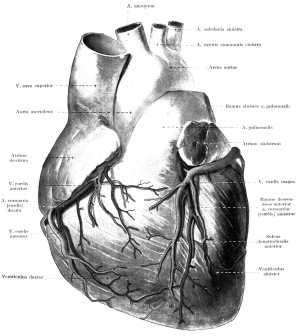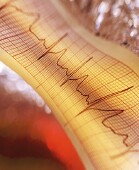- Skip Storing This Everyday Product in the Fridge Door
- Green Tea + B3 Pairing May Boost Brain Health
- Navigating Your Midlife Crisis: Embracing New Possibilities
- City Raccoons Showing Signs of Domestication
- Mapping the Exposome: Science Broadens Focus to Environmental Disease Triggers
- One Week Less on Social Media Linked to Better Mental Health
- Your Brain Changes in Stages as You Age, Study Finds
- Some Suicide Victims Show No Typical Warning Signs, Study Finds
- ByHeart Formula Faces Lawsuits After Babies Sickened With Botulism
- Switch to Vegan Diet Could Cut Your Greenhouse Gas Emissions in Half
Make CPR, Defibrillator Training Mandatory for High School Graduation: Experts


Far too few Americans are surviving cardiac arrest, and a new report issued Tuesday by a federally appointed panel of experts sets out ways to boost survival rates.
One recommendation: Make a working knowledge of CPR and the use of an automated electronic defibrillator (AED) a graduation requirement for all middle- and high-school students.
One expert in emergency care applauded the proposal.
“By teaching laypersons in public settings the proper use of such devices, we may be able to effectively increase survival rates from out-of-hospital cardiac arrest,” said Dr. Robert Glatter, an emergency physician at Lenox Hill Hospital in New York City.
According to the new Institute of Medicine (IOM) report, less than 6 percent of the 395,000 Americans who suffer cardiac arrest outside a hospital each year will survive.
And even in a hospital setting, cardiac arrest survival rates are low, the independent panel said. Roughly 200,000 events occur each year in hospitals but just 24 percent of those patients survive.
“Although breakthroughs in understanding and treating cardiac arrest are promising, the ability to deliver timely interventions and high-quality care is inconsistent,” Robert Graham, chair of the study committee, said in a news release from the National Academy of Sciences (NAS), which oversees the Institute of Medicine.
“Cardiac arrest treatment is a community issue, requiring a wide range of people to be prepared to act,” said Graham, who directs the national program office for Aligning Forces for Quality at George Washington University, in Washington, D.C. Those who can help include “bystanders, family members, first responders, emergency medical personnel, and health care providers,” he said.
Cardiac arrest is not the same thing as a heart attack, according to the NAS. A heart attack occurs when blood flow to the heart is blocked due to narrow or clogged arteries. Heart attacks damage the heart muscle and can cause symptoms like pain, dizziness and trouble breathing.
In contrast, cardiac arrest occurs when an interruption to the heart’s electrical activity causes it to stop beating. A heart attack can lead to cardiac arrest, as can certain genetic mutations or severe electrolyte imbalances.
People who suffer cardiac arrest almost immediately lose consciousness, the NAS said. Their circulation and their heart’s electrical rhythm must be restored as soon as possible.
So, why is cardiac arrest survival so low in the United States?
According to the IOM report, survival depends on several factors, including where cardiac arrests occur, if there are witnesses nearby who are prepared to intervene and what resources are available to deliver timely and effective treatment.
All of these variables could be improved, the IOM panel said, and it offered up key actions that might help save lives:
- Monitor performance and track progress through a national registry of cardiac arrests, which could help health officials spot problems.
- Better educate the public on how to spot cardiac arrest, contact emergency responders, perform CPR and use an AED. The committee supports CPR and AED training as graduation requirements for all middle- and high-school students.
- Improve the performance of EMS systems, focusing on dispatcher-assisted CPR and high-performance CPR.
- Develop strategies to boost care within hospitals, including setting national cardiac arrest accreditation standards. Adopt “continuous quality improvement programs” for cardiac arrest to encourage training within hospitals.
- Promote the development of new, potentially lifesaving technologies and expand research in cardiac arrest resuscitation.
- Create a “national cardiac arrest collaborative,” to identify common goals.
These goals are based largely on the fact that following a cardiac arrest, each minute without treatment decreases the likelihood that patients will survive without disability.
The IOM notes that cutting the time that lapses between cardiac arrest and the initiation of chest compressions is essential. For every minute that passes after a person suffers a cardiac arrest and circulation is restored, the likelihood of their survival drops by 10 percent.
More than eight out of 10 cardiac arrests occur at home. Of these, 45 percent are witnessed by another person. For such event taking place outside a hospital setting at 10 different locations in North America, research shows survival rates range from more than 7 percent to almost 40 percent. Risk-adjusted survival rates for cardiac arrests that occur in the hospital also vary by about 10 percent between the lowest and best performing hospitals.
Right now, CPR training among Americans is low — less than 3 percent of the U.S. population receives such training each year, leaving them unprepared to help in the event of an emergency, the IOM noted.
Glatter believes that emerging technologies may hold the key to saving more lives.
For example, “the use of text messaging which can alert EMS systems as well as all nearby bystanders to an arrest may provide another method to activate a team-based approach to cardiac arrest in the field,” he said. Someday, robotic drones might even be used to quickly dispatch an AED to the site of a cardiac arrest, Glatter said.
Dr. Evan Herzog directs the cardiac care unit at Mount Sinai St. Luke’s Hospital in New York City. “”I absolutely agree with the IOM’s new recommendations to help increase the survival of cardiac arrest victims,” he said. “The time to take greater action to save more lives is now.”
More information
The American Heart Association provides more information on the cardiac arrest.
Source: HealthDay
Copyright © 2025 HealthDay. All rights reserved.










